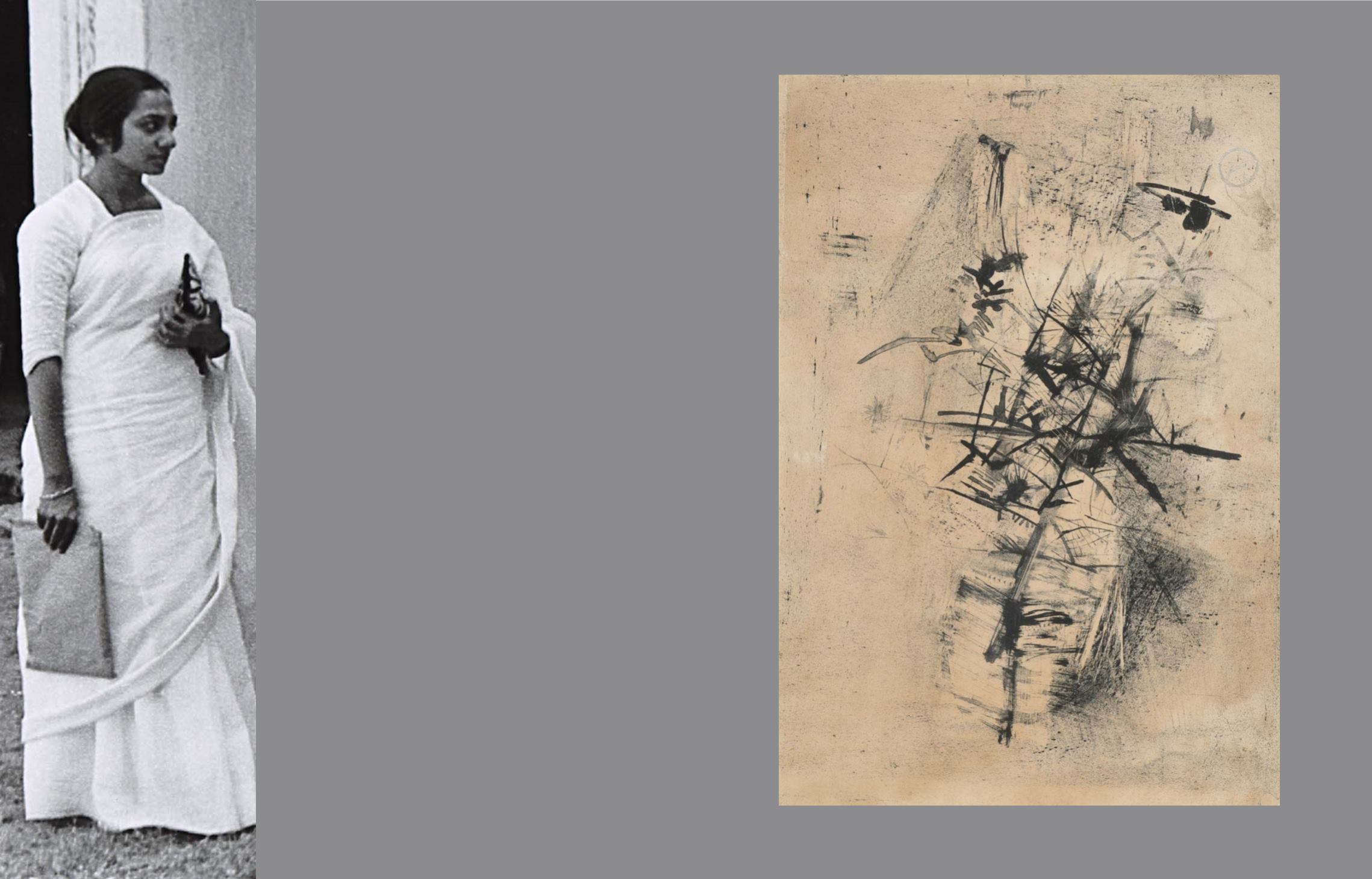

20
21
PROPERTY FROM THE COLLECTION OF GEETA KHANDELWAL, MUMBAI
13
NASREEN MOHAMEDI
(1937 ‒ 1990)
Untitled
Watercolour and ink on paper
16.75 x 11.5 in (42.3 x 29.3 cm)
Rs 12,00,000 ‒ 18,00,000
$ 17,915 ‒ 26,870
PROVENANCE:
Acquired directly from the artist
NasreenMohamedi’s art, like herself, is enigmatic, compounded by the fact
that the artist most often chose to leave her works undated, and offered
no information about their orientation. The present lot bears similarity to
the works on paper from the 1960s, when Mohamedi drew from nature to
create semi‒abstract, almost calligraphic drawings in muted tones.
“Though her works from the 1960s seem to be within the lineage of lyrical
abstraction, they are the most agitated works in her entire oeuvre. A
certain messiness comes through, of nature withered, abandoned, bearing
only traces of the “beatings” of life. Fatal signs of decay are accentuated: dry
leaves with empty veins and spines, an isolated branch of a swayed palm left
to perish. Ink wash and dry brush are adequate to create the rising agitating
ripples in another drawing, the tip of the brush trembling as it leaves a
mark to bleed on the moist paper... a monochromatic intensity takes over...
Despite signs of vulnerability in her intricately rendered fragile forms, hope,
made visible through light‒filled openings, seeps into the wrecked forms
and illuminates areas of the washed‒out ground... Interposing the linear
and tonal and using watery washes of dark and diluted ink, she leaves
pockets of white paper untouched to make empty space on paper behave
as light.” (Roobina Karode,
Nasreen Mohamedi: Waiting Is a Part of Intense
Living
, Madrid: Museo Nacional Centro de Arte Reina Sofia and New York:
The Metropolitan Museum of Art, 2016, p. 27)
In recent years, Mohamedi has gained international recognition for her
unique contribution to abstract art. Reviewing her posthumous solo
show at the Tate Liverpool in 2014, Florence Waters writes, “Mohamedi
broke away from the mainstream practice of figurative painting in post‒
Independence India. Her emphasis on minimal linear gestures to create
infinite imaginary landscapes and structures exemplifies her desire to, as
she wrote in her diaries, obtain “the maximum of the minimum”.”(“Nasreen
Mohamedi, Tate Liverpool, review: ‘mastery of material and form’”,
The
Telegraph
, 11 June 2014, online)
Nasreen Mohamedi
© Jyoti Bhatt


















